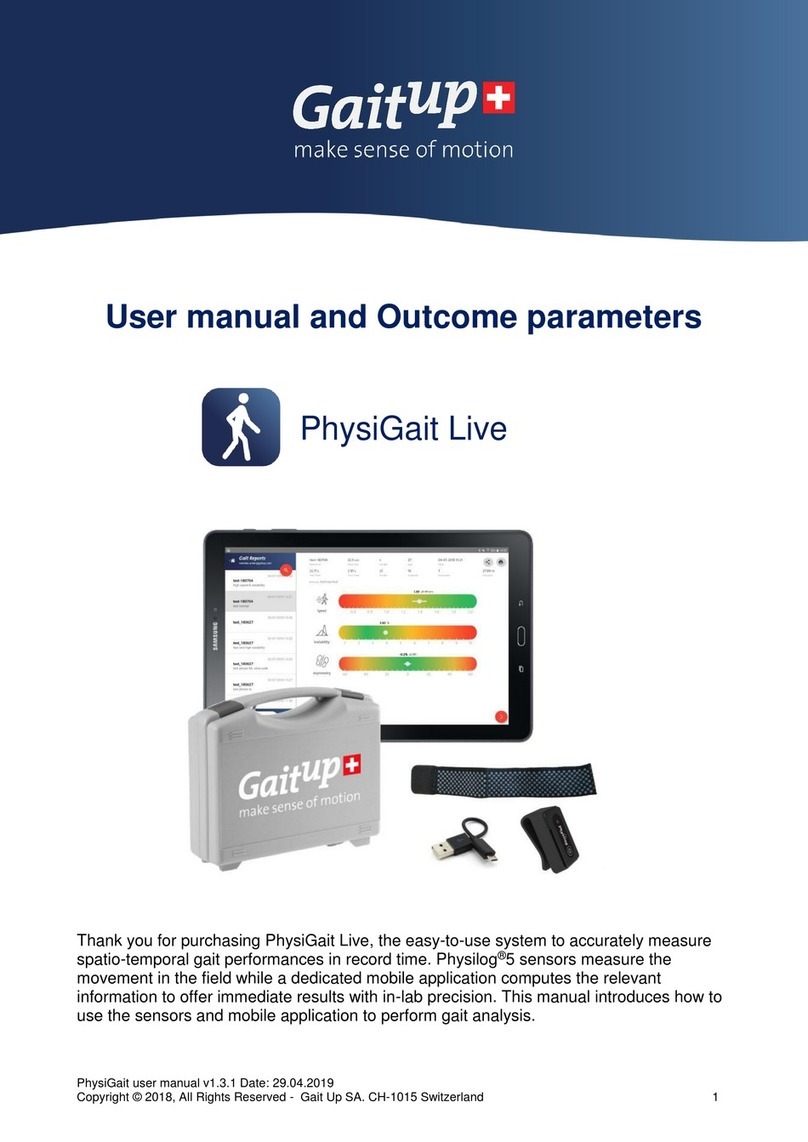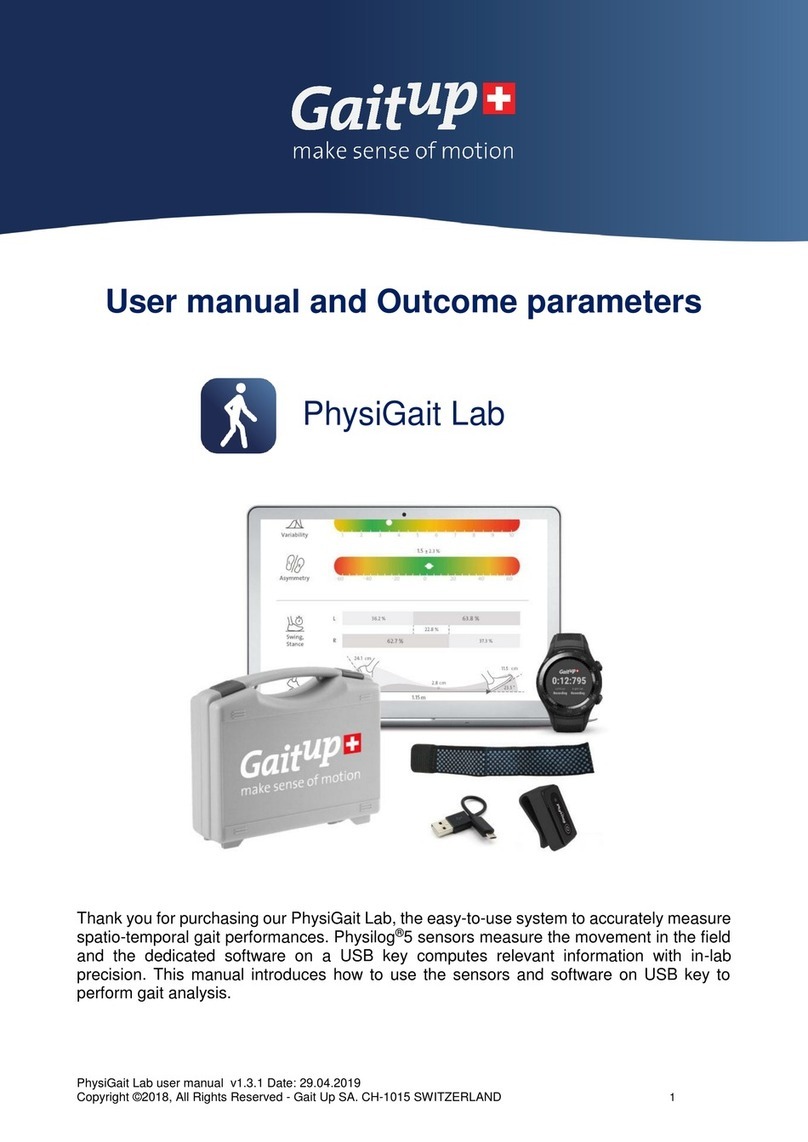Troubleshoot
1. First, Visit FAQ on the download section of our website:
http://www.gaitup.com/support/ (from 10.2015
2. If Physilog® is not working properly, please do a simple reset:
Press the reset button once. LED shines ORANGE and then blinks
3. If Physilog® is really not working, please do a master reset:
Maintain the reset button, then maintain main button, release the reset button, and once LED has
stopped to shine ORANGE, release main button. LED blinks ORANGE 3 times
Warning: this operation formats the device and all data stored on the Physilog® will be erased
The aster reset also deletes Physilog’s date and time information. Simply connect the Physilog to the computer and open the RTK
software. If you don’t have RTK, create a new text document using a basic text editing program such as notepad. Leave it empty and
call it TI E.BIN. Check that no other file called TI E is present on the Physilog (also check hidden files). Copy-paste the TI E.BIN file you
created to Physilog.
4. If the problem persists, email it to: contact@gaitup.com,
Please indicate Physilog®’s number and attach problematic .bin files if any
Reset button
Main button
www.gaitup.com © 2015
Safety information
•Physilog®4 includes a lithium battery. This battery may only be charged over a limited temperature range. Never attempt to dock
or charge your Physilog® when the temperature is outside the range of 0 to 45°C.
•Physilog® should be charged through SB connection with the computer. An external charger may be used ; note that no charger
is provided by Gait p. Gait p declines any responsibility due to charger usage. Supply voltage should be as follows: DC, 5V.
Current consumption is 100mA.
•All external circuits connected to the Physilog® should be «Safety Extra Low Voltage» and «limited Power Sources» circuits as
described in the following standards: IEC60950-1:2005+/A1:2010 and EN60950-1:2006+/A11:2009+/A1:2010+/A12:2011
Warnhinweise:
•Physilog® 4 enthält eine Lithium Batterie. Die Batterie soll nur in einer definierten Temperaturspanne aufgeladen werden. Versuchen Sie nie Ihren
Physilog® an den Computer anzuschliessen oder aufzuladen, wenn die Aussentemperatur nicht zwischen 0°C und 45°C ist.
•Physilog® Sensoren sollen durch eine SB Verbindung mit einem Computer aufgeladen werden. Ein externes Ladegerät kann benutzt werden; Gait
p empfiehlt und liefert aber kein externes Ladegerät. Gait p übernimmt keine Haftung falls ein Ladegerät gebraucht wird. Die erlaubte
Netzspannung ist: DC, 5V. Stromaufnahme beträgt 100 mA.
•Alle an den Physilog angeschlossenen externen Stromkreise sollen die «Sicherheitskleinspannung” und “mit begrenzter Leistung” Regeln erfüllen, die
in den folgenden Normen beschrieben sind: IEC60950-1:2005+/A1:2010 und EN60950-1:2006+/A11:2009+/A1:2010+/A12:2011
Informations relatives à la sécurité:
•Physilog® 4 contient une batterie lithium. La batterie ne doit être chargée uniquement si la température extérieure est dans les limites définies.
N’essayez jamais de connecter ou charger votre Physilog® si la température ambiante est en dehors des limites de 0 à 45°C.
•Physilog® devrait être chargé par une connexion SB avec un ordinateur. n chargeur externe peut être utilisé; par contre Gait p ne livre et ne
recommande pas de chargeur. Gait p refuse toute responsabilité lié au chargeur externe. La tension de réseau devrait être: DC, 5V. La
consommation de courant est de 100mA.
•Tout circuits connectés à Physilog® doivent être «très basse tension de protection» et «source à tension limité» comme décrit dans ces normes:
IEC60950-1:2005+/A1:2010 et EN60950-1:2006+/A11:2009+/A1:2010+/A12:2011
www.gaitup.com © 2015

























